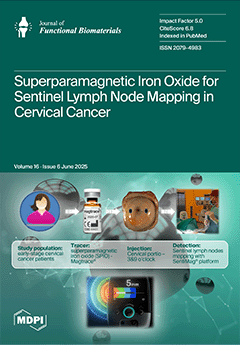Open AccessArticle
A Modular Biomimetic Preclinical Platform to Elucidate the Interaction Between Cancer Cells and the Bone Metastatic Niche
by
Claudia Cocchi, Massimiliano Dapporto, Ania Naila Guerrieri, Chiara Liverani, Marta Tavoni, Chiara Bellotti, Chiara Spadazzi, Anna Tampieri, Marco Gambarotti, Giacomo Miserocchi, Simone Sprio, Enrico Lucarelli, Michele Iafisco, Toni Ibrahim, Alessandro De Vita and Laura Mercatali
Viewed by 1387
Abstract
Breast cancer (BC) frequently metastasizes to bone, leading to poor patient prognosis. The infiltration of cancer cells in bone impairs its homeostasis, triggering a pathological interaction between tumors and resident cells. Preclinical models able to mimic the bone microenvironment are needed to advance
[...] Read more.
Breast cancer (BC) frequently metastasizes to bone, leading to poor patient prognosis. The infiltration of cancer cells in bone impairs its homeostasis, triggering a pathological interaction between tumors and resident cells. Preclinical models able to mimic the bone microenvironment are needed to advance translational findings on BC mechanisms and treatments. We designed strontium-doped calcium phosphate cement to be employed for culturing cancer and bone cells and developed an in vitro bone metastasis model. The platform was established step by step, starting with the monoculture of cancer cells, mature osteoblasts (OBs) differentiated from mesenchymal stem cells, and mature osteoclasts (OCs) differentiated from Peripheral Blood Mononuclear Cells. The model was implemented with the co-culture of cancer cells with OBs or OCs, or the co-culture of OBs and OCs, allowing us to discriminate the interaction between the actors of the bone metastatic niche. The biomimetic material was further challenged with bone metastasis patient-derived material, showing good versatility and biocompatibility, suggesting its potential use as bone substitute. Overall, we developed a bone-mimicking model able to reproduce reciprocal interactions between cancer and bone cells in a biomimetic environment suitable for studying the biomolecular determinants of bone metastasis and, in the future, as a drug efficacy platform.
Full article
►▼
Show Figures






